The Steep Road of Purbaya in Blocking Illegal Used-Clothing Imports
Finance Minister Purbaya Yudhi Sadewa underscored the government’s uncompromising stance against illegal used-clothing imports, which he stated have harmed the…
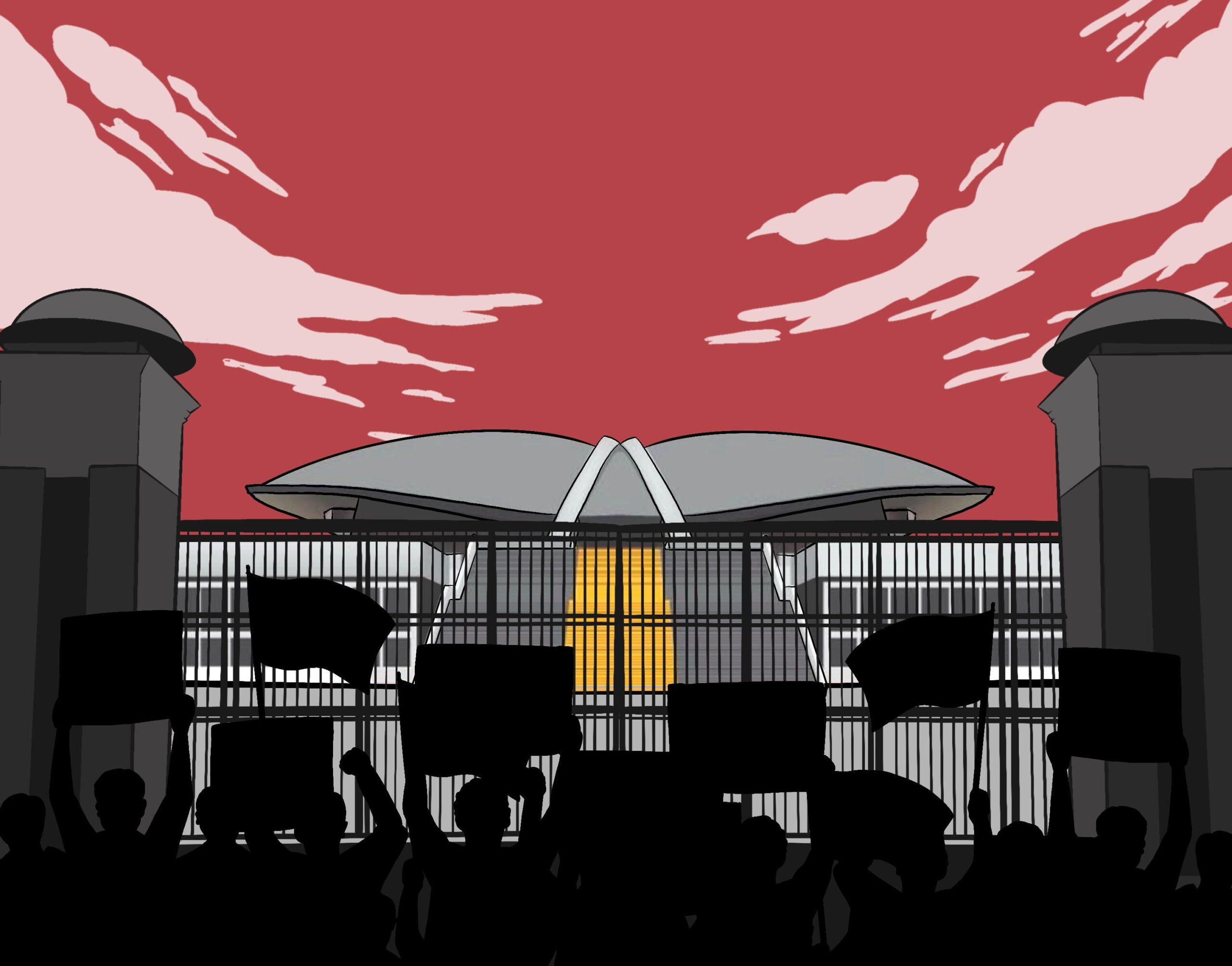
Jakarta suddenly roared on August 25 when a mass rally calling itself the “Indonesian People’s Revolution” filled the grounds of the DPR/MPR building. Heidegger once wrote in his essay Building, Dwelling, Thinking: “A building becomes a home not because it stands, but because it becomes a dwelling full of meaning.” Yet the grand parliament building is now seen by the people as meaningless. Flags flew, fists were raised, banners stretched out, and chants echoed. But what was more powerful than the street shouts was their resonance in the digital realm, generating over 57 million interactions on social media—proof that today’s revolutions come not only from bodies in the streets but also from fingers typing online.
This public anger did not come out of nowhere. It was an accumulation of long-standing disappointment: rising rice prices and basic necessities, lack of access to jobs, declining purchasing power, and unreasonable tax regulations—all of which added salt to a deep wound.
| VAT 11% (up from 10%) | April 1, 2022 | Law No. 7/2021 on Tax Regulation Harmonization (UU HPP) |
| Fintech & Crypto Tax | May 1, 2022 | Ministry of Finance Regulation No. 68/PMK.03/2022 |
| Entertainment Tax 40–75% | Jan 1, 2024 | Law No. 1/2022 on Fiscal Relations |
| BPJS Health Standard Class Fee (KRIS) | July 1, 2025 | Presidential Decree No. 59/2024 |
| Online Transaction Tax | revoked by Ministerial Regulation No. 12/PMK.010/2019 | Ministry of Finance Regulation. No. 210/PMK.010/2018 |
Most recently, following the issue of adulterated rice, the National Food Agency (Bapanas) raised the ceiling price for medium rice to Rp 13,000/kg. In 10 provinces, average rice prices already exceeded this ceiling, with North Sulawesi recording the highest disparity—16.15% above the regulated ceiling.
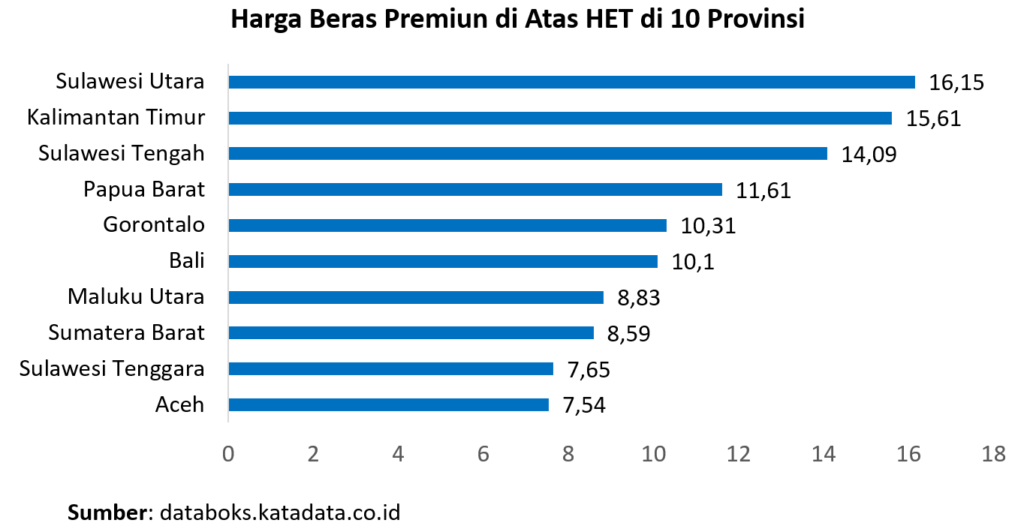
Unemployment and mass layoffs added fuel to the fire. The Ministry of Manpower recorded 1,570 industrial disputes in the first half of 2025, with 1,139 being layoffs. West Java had the highest share at 29.07%.

The IMF, in its April 2025 World Economic Forum Outlook, reported Indonesia’s unemployment rate at 5%, up from 4.9% in 2024 and projected to reach 5.1% in 2026—7th highest in Asia and the highest in Southeast Asia.
These wounds were deepened when DPR elites planned to increase housing allowances, confirming Tocqueville’s words in Democracy in America: “People don’t revolt because life is hard, but because they feel treated worse than they deserve.”
Thus began this week’s episode: people’s voices moving across spaces. On the streets—banners, chants, and stomping feet. In mainstream media and online, waves of words refusing silence.
Binokular’s Newstensity tool recorded 4,853 news articles from Aug 24–26, peaking on the 25th when the protest occurred. Most coverage (74%) carried negative sentiment: issues of DPR’s allowance hike, arrests of demonstrators, journalist intimidation, calls to dissolve parliament, traffic jams, and property damage.
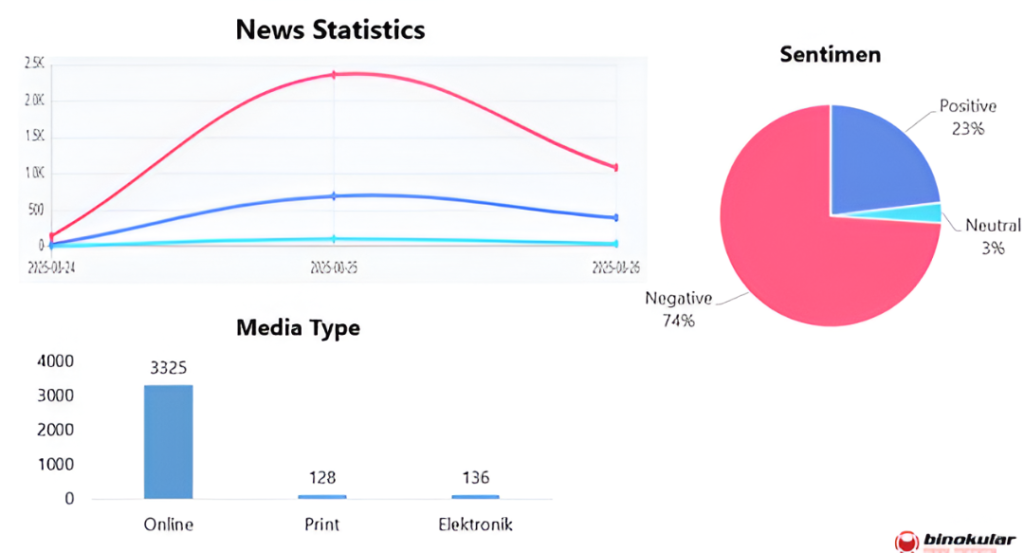
Meanwhile, Socindex captured 106,756 social media conversations with 57.5 million engagements across Twitter/X, Facebook, Instagram, TikTok, and YouTube. Produced by 2,764 accounts and 4,739 posts, the discourse leaned negative and neutral. Bot detection showed 48% human-driven activity, proving organic public anger rather than artificial manipulation.
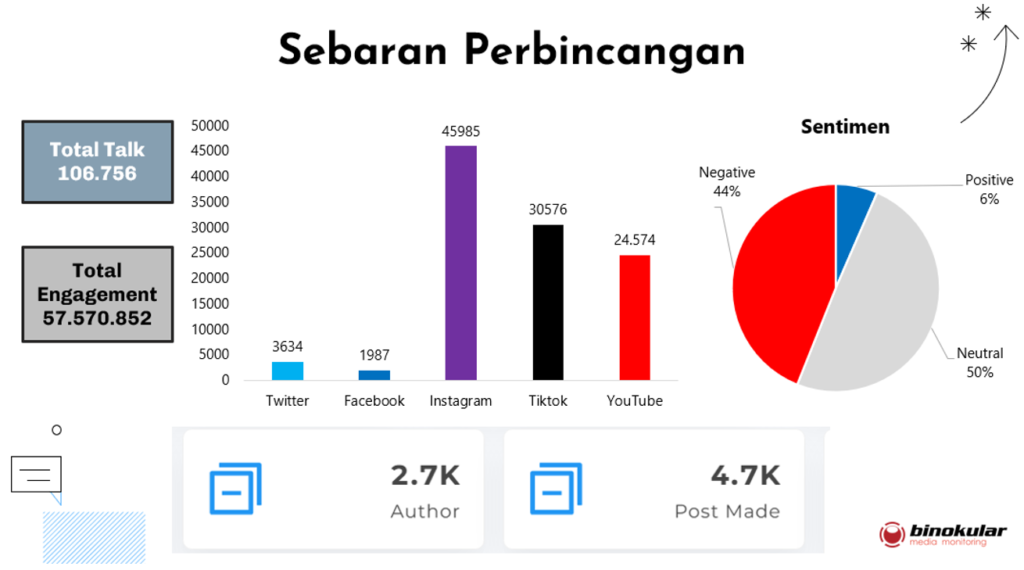
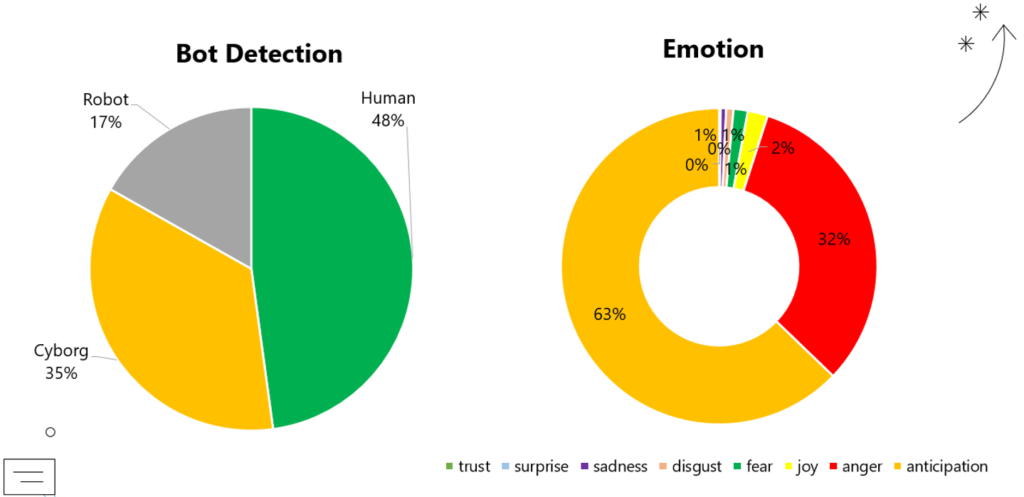
Emotion analysis revealed anger and anticipation dominated—echoing Castells’ thesis in Networks of Outrage and Hope that digital demonstrations form horizontal networks of rage and vision.
Before today’s digital age, Michel Foucault stressed that power operates not only through institutions but through bodies. Demonstrations are bodily resistance: standing under the sun, marching against tear gas, pushing against parliament’s concrete fences. These bodies proclaim: “We refuse to be silenced.”
On social media, Jacques Lacan’s psychoanalysis applies: the symbolic order of parliament—rules, procedures, sessions—cannot fully capture the Real of people’s suffering: rising prices, low wages, injustice. Protests, then, are eruptions of the Real: voices breaking through state symbols. Every post becomes a digital ceremony, every comment a chant, every hashtag a symbolic flag.
Yet police responded with discriminatory force. Word clouds highlighted terms like “gas,” “riot police,” “retreat,” “water cannon,” and “beaten.” LBH Jakarta reported 370 arrests, including 200 minors; KPAI confirmed 203 children detained. Here, clashes reflected the breakdown of communication between people and state.

From a psychoanalytic lens, social trauma repeats. Each generation of Indonesian students has taken to the streets—1966, 1998, 2025. Because collective wounds never heal, protests become recurring rituals of unfinished healing.
The August 25 protest is a mirror: Indonesia’s democracy is being tested. We have institutions, procedures, and laws—but do we still have trust? Parliament’s existence is constitutional, but its moral legitimacy depends on returning to serve the people, shedding privilege, and reclaiming true representation.
Without reform, transparency, and courage to put the people first, the gap will widen. Cries of “Dissolve Parliament!” will echo from the streets, into media headlines, and across the digital realm.
Plato once asked in Republic: “Who will guard the guardians?” Today, Indonesians answer: “We ourselves will guard them—with voices, hashtags, protests, and resistance.”
As Pramoedya Ananta Toer’s Bumi Manusia reminds us: “We have resisted, as best, as honorably as we could.”
Or, echoing the film Olympus Has Fallen (2013), where U.S. Secretary of State Ruth McMillan, bloodied but unbroken, said: “We may meet our Creator today. But one thing I don’t want on my tombstone: She died without resisting.”
Writer: Hans Hayon (Newstensity), Ilustrator: Aan K. Riyadi
Finance Minister Purbaya Yudhi Sadewa underscored the government’s uncompromising stance against illegal used-clothing imports, which he stated have harmed the…
Over the past month, Indonesia’s political elites, economists, and the general public were stirred by a statement from Finance Minister…
Gus Elham Yahya Luqman, a young preacher from Kediri, East Java, went viral on social media in early November 2025…
The world was thrown into chaos overnight when multiple major internet services went down — including Binokular, whose web-based platforms…
Who would have thought a simple joke could explode into a full-blown social-media drama?Everything began with a viral post comparing…
The 2025 commemoration of National Heroes’ Day turned out to be more controversial than usual. Out of roughly 40 proposed…
Driving his Mercedes-Benz E-Class E300 Coupe, West Java Governor Dedi Mulyadi visited the Danone Aqua plant in Darmaga Village, Cisalak…
October 20, 2025 marks one full year since President Prabowo Subianto and Vice President Gibran Rakabuming Raka began their administration…
What if something as ordinary as the seafood on our dining tables carried an invisible danger? While public attention was…
That afternoon, a call came to the phone of Purbaya Yudhi Sadewa, then head of the Indonesia Deposit Insurance Corporation…